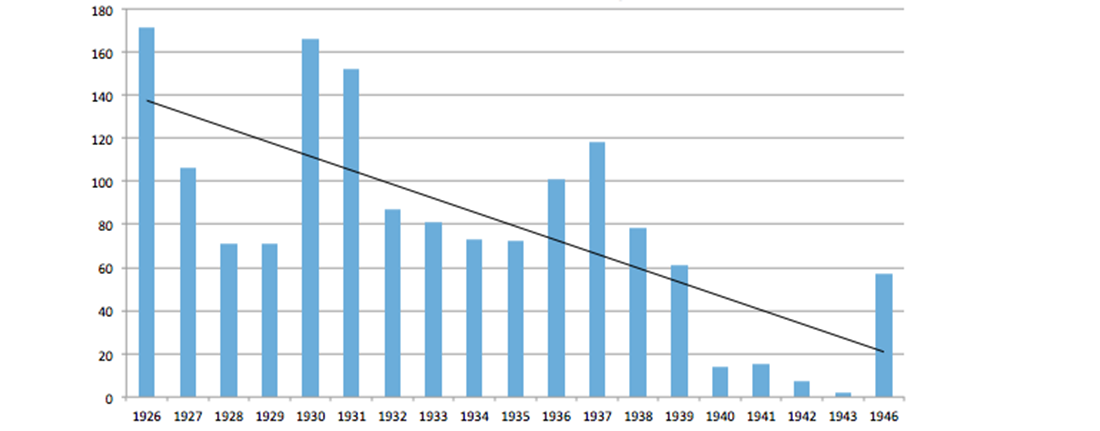The Association for the Research and Archiving of Armenian Memory ( ARAM ) invites you to discover below the list of the Armenians from Marseille and its surroundings who applied for a Nansen passport at the Bouches-du-Rhône Prefecture between December 8th 1926 and December 3rd 1946. These lists come from the register referenced 4M1138 : Foreigners Police. Register of the Nansen certificates, which may be consulted at the Bouches–du- Rhône county archives.
The search and the complete capture under Excel spreadsheet are Denis Der Sarkissian’s work which enabled the association to integrate 1503 identities in a MySQL data base.
The Nansen passport is an identity document recognized by many states and which enabled stateless refugees to travel freely. It was initiated in 1922 by Fridtjof Nansen ( 1861 – 1930 ) , the first High Commissioner of the League of Nations. Originally it was dedicated to the refugees of the former Russian Empire fleeing the October Revolution and who became stateless after a soviet decree at the end of 1922. Its benefit will be extended to Armenians on May 31st 1924 and in 1928 to Assyro-Chaldeans. Even if the passport collected many reproaches ( it didn’t give the right to return to the country of origin and didn’t give more protection in the country of refuge ) an agreement in May 1926 gave more flexibility to stateless people and its adoption spread more and more largely to Armenians. Its final status was fixed by the Geneva Convention on October 28th 1933. Its denomination was officially suppressed after WWII but was still present in the administration current language. At that time the Travel Document replaced the Nansen passport.
Between December 9th 1926 and December 3rd 1946 about 1500 Armenians from Marseille and its surroundings appeared in the Town Hall of their residence or in the Préfecture des Bouches-du-Rhône to register an individual application for a Nansen passport.
You can file the list ( alphabetically according to family names , names , residence , address ) by clicking on the head of each column. You can also use the search section according to names.


